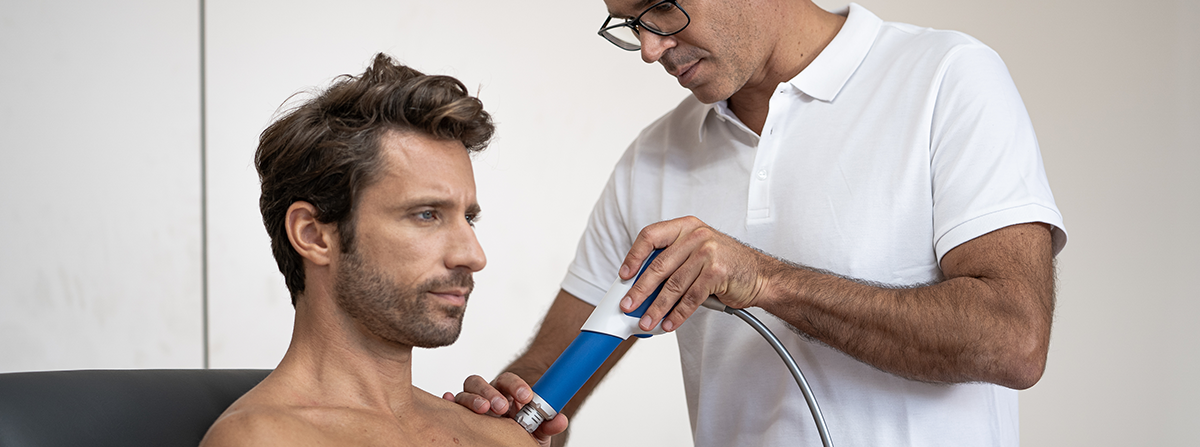El tratamiento con ondas de choque extracorpóreas (ESWT) utiliza pulsos acústicos para tratar determinados trastornos musculoesqueléticos. Es una modalidad de tratamiento bien estudiada y comúnmente utilizada para una variedad de condiciones musculoesqueléticas. La terapia de ondas de choque extracorpóreas radiales (rESWT) se utiliza con éxito para:
- Indicaciones superficiales, como la fasciopatía plantar, la tendinopatía del tendón de Aquiles, el síndrome de estrés de la tibia medial, el síndrome de dolor del trocánter mayor, etc.
- Primera elección para tratar tendinopatías y entesopatías del calcáneo, fasciopatías, desgarros miotendinosos, patologías musculares, puntos gatillo y tejidos espásticos.
- Patologías subagudas o crónicas

